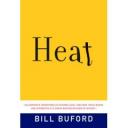When I’m looking for inspiration on where to eat out, which new ingredients to try, or what to make with ingredients I have at home, I turn to my favorite email newsletters. I’m sure there are zillions out there, but in an effort to keep inbox clutter to a minimum, I pared them down to five:
1. Zagat Buzz
Best For: Reading about the hottest new restaurant openings and keeping up the food buzz.
Get it: At Zagat.com. Although you have to be a Zagat member to browse through the reviews on the site, the Buzz is free.
Too Bad: Only offered in select cities, including San Francisco, Los Angeles, New York City, Boston, Chicago, London, Washington D.C. and Philly.
Get a Taste: Planning to be open 22/7 (closed only from 4–6 AM), New American newcomer Lift is a much needed late-night destination, set on the ground floor of a born-again Hollywood apartment complex; its fair-priced menu lists innovative fare like lobster mac ’n’ cheese, Sonoma duck confit hash and oatmeal crème brûlée, served in a room with 21st-century coffee-shop decor.
2. The Splendid Table
Best For:Perfecting one recipe. The Splendid Table often offers tips for shopping and preparing the entire dish.
Get it: This food read is brought to you by American Public Media. Get it at http://splendidtable.publicradio.org/
Too Bad: There’s usually only one recipe. Don’t like the week’s offering and it goes directly to the trash.
Get a Taste: Fragrant Curried Chicken with Creamy Yogurt: Daunting though it may appear, most of these ingredients are tossed in a food processor for a fresh curry paste. What I like is how no browning is needed for the chicken, saving you from a messy stove top. Finishing with cool yogurt stands up to the nip of chile, black pepper and spice. Basmati rice is the classic partner here.
3. The Dish from Food and Wine (Weeknight Edition)
Best For: Spicing up your meals mid-week, getting ideas for great, inexpensive wines, learning how to pair your meals with wine. Click over to the site for luscious photographs and slide shows that will inspire you to create greatness any day of the week.
Get it: Free at the Food and Wine website.
Too Bad: There is simply not enough time to try all of the fabulous recipes. I’ve saved a bunch of these in my inbox (including “15 Hearty Vegetable Soups, Fantastic Hot Sandwiches” for a rainy day).
Get a Taste: Get a Taste: Our top 15 warming soups are all hearty and delicious. Try the Vegetable Soup with Fennel, Herbs and Parmesan Broth—antioxidant-rich fennel is one of its several good-for-you ingredients.
4. CHOW Digest (Chowhound at Home edition)
Best For: Getting tips from other foodies on weird foods, different places to go out in new locales, and what to do when you have too much of one ingredient.
Get it: Sign up as a member on Chow.com (free) and register for the digest.
Too Bad: While the newsletter is edited by a Chow staffer, you’re getting tips from people you’ll likely never meet. Cook beware.
Get a Taste: Jennalynn requested suggestions for what to do with “a bunch of fresh purple passionfruit,” and Chowhounds responded.
mlgb uses fresh passion fruit anywhere one might use lemon juice, such as fruit salad, yogurt, salad dressing, or fish. “One of my favorite dishes now is pan-grilled salmon with a passion fruit squeezed over,” says mlgb.
5. Daily Candy
Best For: Finding out about cute new cupcake shops, hip cafes and the hottest new dining spot. Aimed at young women, this daily digest also includes fashion, makeup and culture finds.
Get it: Get your daily cuteness at DailyCandy.com.
Too Bad: Like Zagat, Daily Candy is only offered in select cities. Bummer.
Get a Taste: If you’ve got other designs for your day, start it off at BLD, chef Neal Fraser’s (Grace, Iron Chef America) bright, airy new digs, where morning meals are just as important as lunch and dinner. (BLD, get it?). With ingredients from small growers and indie gourmet lines (specialty products like Berkshire maple syrup are sold in the market corner), Fraser uses fresh techniques to make gourmand versions of traditional bites. Like classic egg dishes (try the frittata with Prosciutto di Parma-wrapped asparagus with Gruyère and arugula); bruleed grapefruit; white bean huevos rancheros; and brioche French toast with Cowgirl Creamery crème fraiche. Or choose freshly baked breads and pastries to go with your breakfast cheese plate.
